Illusionary Surface Interfaces

Principal Investigators
Prof. Dr.-Ing Katrin Wolf, Berlin University of Applied Sciences and Technology (Homepage)
Prof. Dr. Albrecht Schmidt, LMU Munich (Homepage)
Illusionary Surface Interfaces is a research project within the Scalable Interaction Paradigms for Pervasive Computing Environments (SPP2199). The project aims to investigate how haptic sensations can be induced with less hardware as possible, as future technologies might rely on interfaces where haptic illusions are necessary to provide users with haptic feedback. Traditional computers typically refer (through visual affordances) to both the perceived and actual properties of the interface – suggesting not only fundamental functionalities but also determining and communicating how humans possibly use the system. Such rich information visualization may, however, not suit the way we want pervasive computers and computational everyday environments to look and feel. We aim to create novel interactive experiences, that exploit multisensory illusions in order to extend the range of interface properties that can be displayed, using only everyday object surfaces as interfaces. In a manner similar to the “rubber hand illusion”, in which people can be induced to perceive a physical touch based purely on what they see, we will support visual and haptic feedback induced by augmented vision and sound. Instead of changing the objects’ physicality, we will visually and auditory augment them using “smart glasses” and projectors, while at the same time augmenting them haptically by inducing multisensory illusion. Technically, this includes sensing user interaction using machine learning tools and multimodal presentation of information.
Main Research Question
How can illusionary surface interfaces support creating better and more usable, tangible and touch-based interactions with pervasive computers?
Sub-Research Questions
- How can we improve interactive surfaces and objects using multisensory illusions in our personal space or a control room?
- What are effective and robust multimodal methods to enhance the haptic experience with everyday objects?
- How can we comprehensively capture relevant and multimodal parameters that describe the user experience for physical interaction with artefacts?
- How does physical interaction on a set of tangible and touch interaction elements impact human perception, experience, and behaviour?
PhD Students

Yannick Weiss
Ludwig-Maximilians-Universität (LMU) in Munich
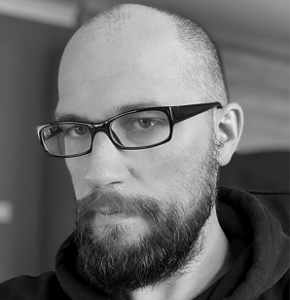
Marco Kurzweg
Berlin University of Applied Sciences and Technology
Publications
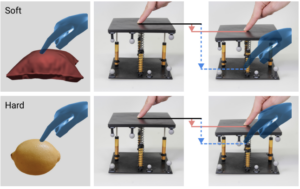
Using Pseudo-Stiffness to Enrich the Haptic Experience in Virtual Reality
Yannick Weiss, Steeven Villa, Albrecht Schmidt, Sven Mayer, and Florian Müller.
CHI 2023
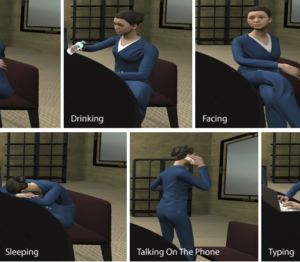
Using Body Language of Avatars in VR Meetings as Communication Status Cue.
Marco Kurzweg, Jens Reinhardt, Wladimir Nabok, and Katrin Wolf.
MuC 2021
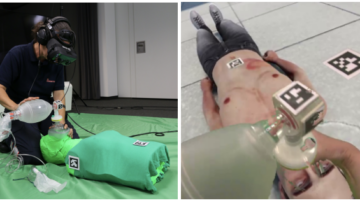
When Realities Interweave: Exploring the Design Space of Immersive Tangible XR.
Jakob Carl Uhl, Helmut Schrom-Feiertag, Georg Regal, Linda Hirsch, Yannick Weiss, and Manfred Tscheligi.
TEI 2023
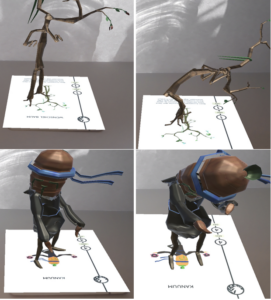
PLAY ME! Influencing Game Decisions through Suggestions made by Augmented Characters
Marco Kurzweg, Jens Reinhardt, Moritz Stoll, Julia Wirth, and Katrin Wolf.
MUM 2020
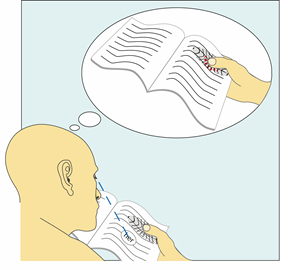
Visuo-Haptic Interaction.
Katrin Wolf, Marco Kurzweg, Yannick Weiss, Stephen Brewster, and Albrecht Schmidt.
AVI 2022
- Yannick Weiss, Steeven Villa, Albrecht Schmidt, Sven Mayer, and Florian Müller. 2023. Using Pseudo-Stiffness to Enrich the Haptic Experience in Virtual Reality. In Proceedings of the 2023 CHI Conference on Human Factors in Computing Systems (CHI ’23). Association for Computing Machinery, New York, NY, USA, Article 388, 1–15. https://doi.org/10.1145/3544548.3581223
- Jakob Carl Uhl, Helmut Schrom-Feiertag, Georg Regal, Linda Hirsch, Yannick Weiss, and Manfred Tscheligi. 2023. When Realities Interweave: Exploring the Design Space of Immersive Tangible XR. In Proceedings of the Seventeenth International Conference on Tangible, Embedded, and Embodied Interaction (TEI ’23). Association for Computing Machinery, New York, NY, USA, Article 67, 1–4. https://doi.org/10.1145/3569009.3571843
- Katrin Wolf, Marco Kurzweg, Yannick Weiss, Stephen Brewster, and Albrecht Schmidt. 2022. Visuo-Haptic Interaction. In Proceedings of the 2022 International Conference on Advanced Visual Interfaces (AVI 2022). Association for Computing Machinery, New York, NY, USA, Article 89, 1–4. https://doi.org/10.1145/3531073.3535260
- Marco Kurzweg, Jens Reinhardt, Wladimir Nabok, and Katrin Wolf. 2021. Using Body Language of Avatars in VR Meetings as Communication Status Cue. In Proceedings of Mensch und Computer 2021 (MuC ’21). Association for Computing Machinery, New York, NY, USA, 366–377. https://doi.org/10.1145/3473856.3473865
- Marco Kurzweg, Jens Reinhardt, Moritz Stoll, Julia Wirth, and Katrin Wolf. 2020. PLAY ME! Influencing Game Decisions through Suggestions made by Augmented Characters. In Proceedings of the 19th International Conference on Mobile and Ubiquitous Multimedia (MUM ’20). Association for Computing Machinery, New York, NY, USA, 288–298. https://doi-org.emedien.ub.uni-muenchen.de/10.1145/3428361.3428406